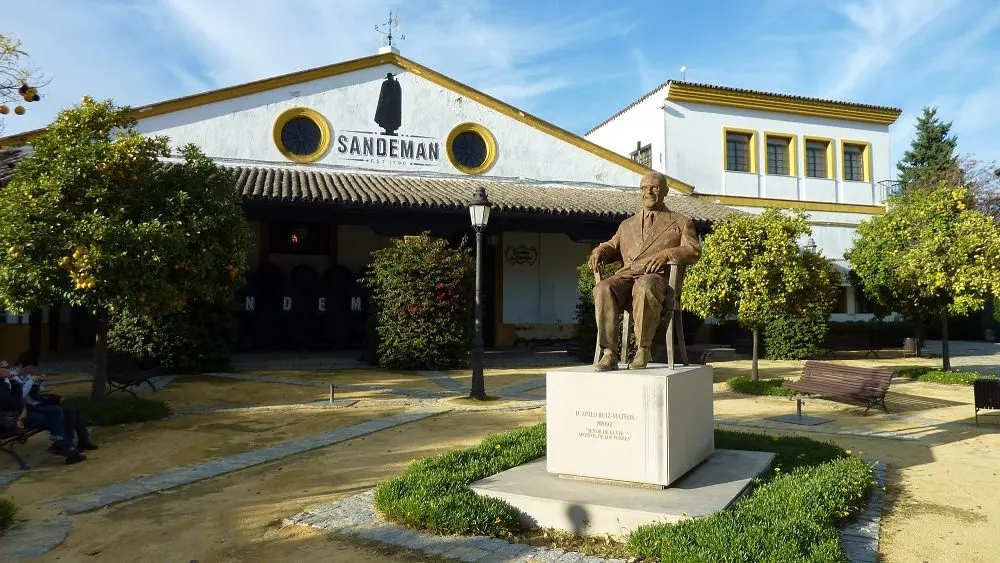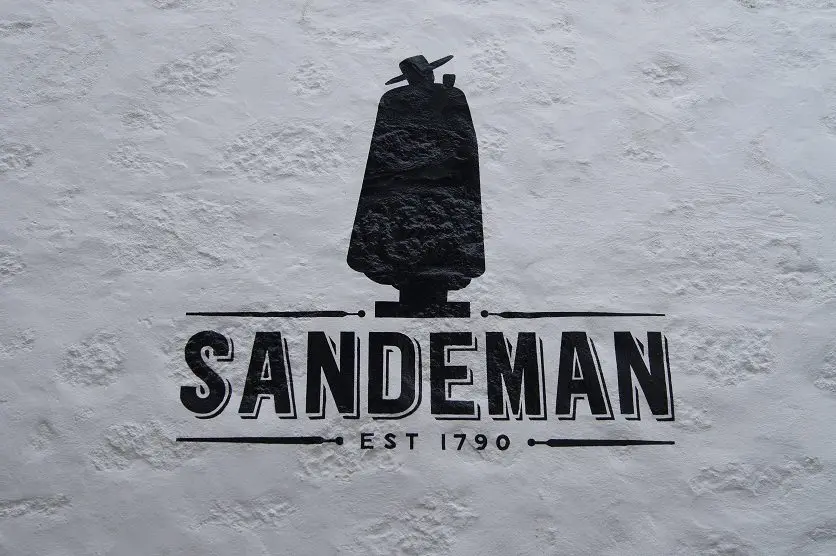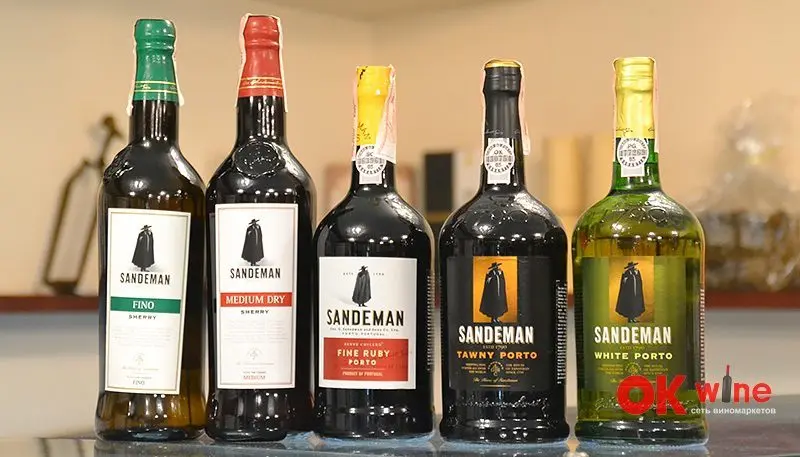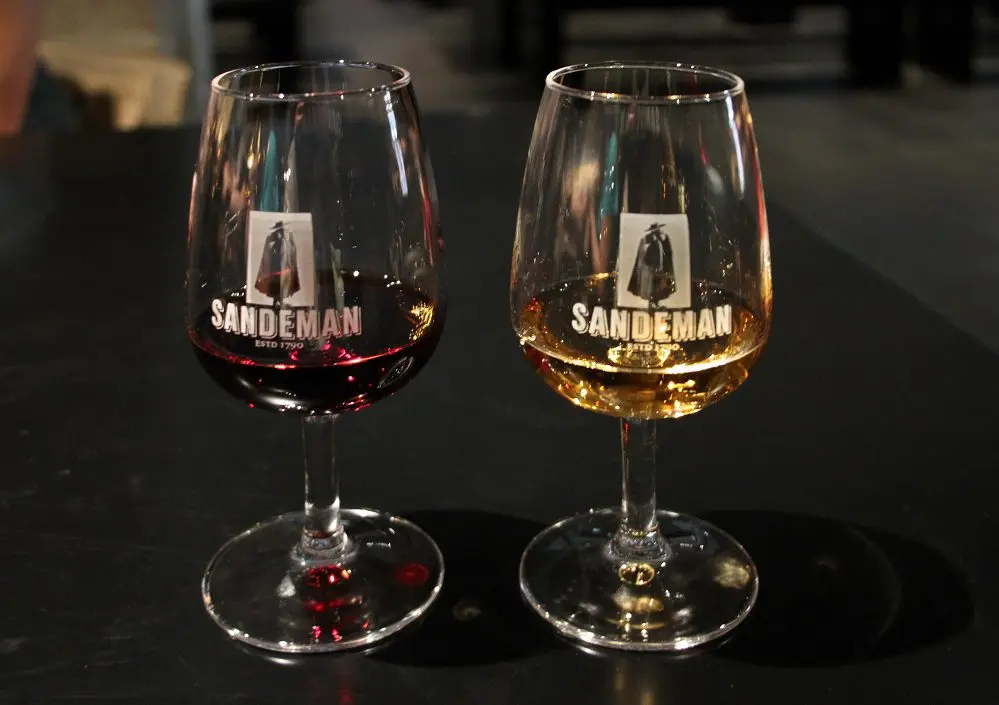Wine House Sandeman (Sandeman) – a world famous producer of ports, brandy and Madeira. The company has been selling its products worldwide for over 200 years, and since the 1980s has been producing wines and sherry from its own grapes.
Historical information
The founder of the company, George Sandeman, was born in the small Scottish town of Perth in the family of a wealthy linen manufacturer. In 1790, the future winemaker borrowed £300 from his father and, together with his brother George, acquired his first wine cellar. During that period, military conflicts with France led to interruptions in the supply of French wines, so the brothers decided to focus on selling Spanish port and sherry.
Demand for the wines was high, and things immediately went well. At first, George represented the interests of the James Duff company and sold this brand of sherry in Tom’s coffee shop. Eight years later, David switched to the banking business and left the business to his brother. In 1805, Sandeman opened an office in the City of London and began selling sherry under his own brand. The businessman was the first to burn the brand of the company on the barrels to make the drinks recognizable.

In 1811, Sandeman bought several houses in the Portuguese city of Porto, where he built cellars to store batches of wine before shipping. The buildings were located on the banks of the Douro River and the cool wind from the Atlantic did not allow the wine to spoil. Even the war with Napoleon and the long siege of the city did not prevent the development of business. During this difficult time, Sandeman teamed up with two partners and founded Geo. Sandeman, Gooden & Forster. The company managed to establish trade relations and by 1825 it was already selling its wines not only in Europe but also in America and Africa.
George Sandeman died in 1841, leaving the business to his nephew. By that time, the company already had a reputation as one of the world’s best producers of port wine. The company transported wines on its own schooner, which helped to quickly deliver products to cities on the coast. In 1877, the Trademark Law was passed in Great Britain, and George Sandeman & Co was among the first officially registered brands.

In 1909, the company became a supplier to the royal court, and the buyers of wines were the most fashionable restaurants in Europe. The company actively advertised its products and paid great attention to the protection of its trademark. In 1928, the company’s logo appeared – an image of a man in a hat with a glass of wine in his hand, named Don. The drawing still adorns the wines under the Sandeman brand.
In 1935, the company produced the first port wine of its own bottling, and since then it has only increased production volumes. In the 1980s, the company entered the Seagram Corporation, while remaining a family business, and representatives of the seventh generation of Sandemans are at the helm. Sandeman ports are recognized as the most titled in the world – in recent years alone, the wines of this brand have received a total of 170 awards from industry competitions.
Port Sandeman – production features
In the Douro wine region, the company owns most of the vineyards, the total planting area is several hundred hectares. The vines are planted on artificial slate terraces, so they can easily withstand harsh winters and summer heat. In 2002, the company entered the Sograve Corporation, which made it possible to build a new enterprise, which instantly became one of the most visited wine tourism centers in the region.
The winery Quinta do Seixo is surrounded by vineyards on all sides and, thanks to a well-thought-out project, fits perfectly into the landscape. Harvested grapes enter the bunkers, where they are checked for quality. The juice is squeezed out by robotic presses that mimic the movements of the human foot. Port wine is made according to old recipes and aged in cellars, which are considered the largest in the region. Super premium class wines mature in oak barrels for several decades.

Types of Port Sandeman
Sandeman Port wines are made only from grapes grown in the Douro region. The most demanded series of the brand is Towny port wines, aged in small barrels, where the wines acquire a thick structure and a slightly astringent taste.
The line includes:
- Sandeman Porto Fine Tawny – vanilla and dried fruit aroma;
- Sandeman Porto Imperial Reserve – a blend of rare aged wine stocks has a rich fruity bouquet with hints of spices and woods;
- Sandeman Porto Tawny 10 Years Old is an aged premium port wine with a bouquet that combines notes of fruit jam, nuts, vanilla and raisins;
- Sandeman Porto Tawny 20 Years Old – wine with a complex taste with hints of dried apricots, honey, spices and nuts;
- Sandeman Porto Tawny 30 Years Old is a thick gold-colored drink with a honey-vanilla aroma and a deep taste, where notes of dried apricots, vanilla and hazelnuts come to the fore;
- Sandeman Porto Tawny 40 Years Old is an aged collection wine with a balanced and complex bouquet;
- Old Tawny Cask 33 is a blend of wines deposited in the 1960s with spicy notes of curry, pepper and nutmeg.

The Ruby Port Wine series is produced according to recipes that have not changed since the company was founded. Porto Fine Ruby has a ruby color and a pleasant taste with a predominance of fresh plums and red fruits. Porto Founder’s Reserve is created from the best wines of each vintage and aged in barrels for at least five years. The bouquet is dominated by fresh fruits.
The line of white ports includes Porto Fine White and Porto Apitiv Reserve. The wines are distinguished by an elegant taste with hints of orange peel, dried fruit and wood resin. The manufacturer recommends tasting these wines with ice, tonic water and a slice of lemon. White ports are especially good as an aperitif.
The vintage Sandeman line deserves special attention. Wines are made from grapes harvested in a certain year, which guarantees their exceptional quality. The famous Sandeman Porto Vintage is an annual wine with a storage potential of up to 40 years. After bottling, it undergoes a long aging in the bottle and is available for tasting only after 18-20 years.

In addition to port wine, the company produces traditional Spanish drinks: sherry, brandy and Madeira. Sandeman Brandy de Jerez Imperial deserves special attention. The Portuguese version of French cognac is aged for a year in sherry casks. However, it is difficult to determine the age of the drink, since the Solera technology provides for the constant mixing of old and young spirits. Sherry brandy Sandeman has a well-balanced taste with bright shades of sherry, oak and vanilla.









